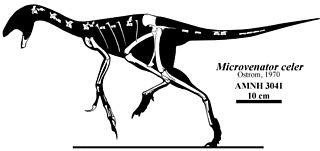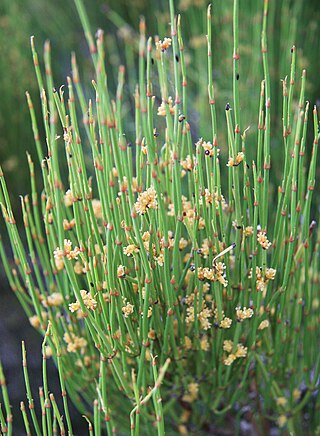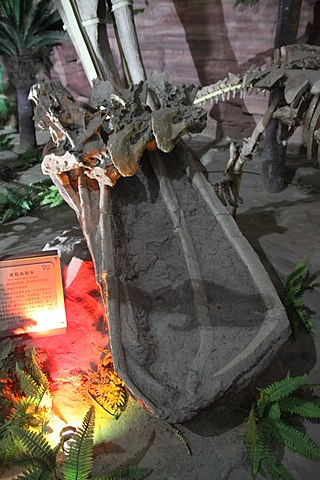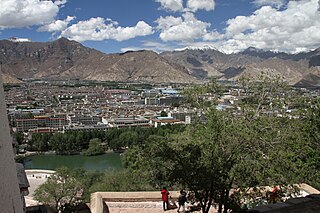
Tibet is a region in the central part of East Asia, covering much of the Tibetan Plateau and spanning about 2,500,000 km2 (970,000 sq mi). It is the homeland of the Tibetan people. Also resident on the plateau are some other ethnic groups such as the Monpa, Tamang, Qiang, Sherpa and Lhoba peoples and, since the 20th century, considerable numbers of Han Chinese and Hui settlers. Since the annexation of Tibet by the People's Republic of China in 1951, the entire plateau has been under the administration of the People's Republic of China. Tibet is divided administratively into the Tibet Autonomous Region, and parts of the Qinghai and Sichuan provinces. Tibet is also constitutionally claimed by the Republic of China as the Tibet Area since 1912.

The Tibet Autonomous Region or Xizang Autonomous Region, often shortened to Tibet or Xizang, is an autonomous region of the People's Republic of China (PRC) in Southwest China. It was overlayed on the traditional Tibetan regions of Ü-Tsang and Kham.

Microvenator is a genus of dinosaur from the Early Cretaceous Cloverly Formation in what is now south central Montana. Microvenator was an oviraptorosaurian theropod. The holotype fossil is an incomplete skeleton, most likely a juvenile with a length of 1.3 m (4.3 ft), and consequently, the adult size remains uncertain. Microvenator celer is primitive and may be the "sister taxon to all other oviraptorosaurs."
Monkonosaurus is a dubious genus of herbivorous stegosaurian dinosaur from the Late Jurassic/Early Cretaceous-aged Loe-ein Formation of Tibet. Some sources place it as alive during the Oxfordian - Albian stages, around 163 - 100 million years ago, although Monkonosaurus was probably only alive during the Late Jurassic, making it among the earliest known stegosaurs along with Chungkingosaurus and Bashanosaurus.

Ephedra is a genus of gymnosperm shrubs. The various species of Ephedra are widespread in many arid regions of the world, ranging across southwestern North America, southern Europe, northern Africa, southwest and central Asia, northern China and western South America. It is the only extant genus in its family, Ephedraceae, and order, Ephedrales, and one of the three living members of the division Gnetophyta alongside Gnetum and Welwitschia.

The Indus-Yarlung suture zone or the Indus-Yarlung Tsangpo suture is a tectonic suture in southern Tibet and across the north margin of the Himalayas which resulted from the collision between the Indian plate and the Eurasian plate starting about 52 Ma. The north side of the suture zone is the Ladakh Batholith of the Karakoram-Lhasa Block. The rocks of the suture zone consist of an ophiolite mélanges composed of Neotethys oceanic crustal flyschs and ophiolites; the Dras Volcanics: which are basalts, dacites and minor radiolarian cherts – the remains of a mid- to late Mesozoic volcanic island arc; and the Indus Molasse which are an Eocene or later continental clastic sediments.
Zhao Xijin was a Chinese paleontologist notable for having named numerous dinosaurs. He was a professor at Beijing's Institute of Vertebrate Paleontology and Paleoanthropology.
The Lura Formation is a geological formation in western China, which outcrops in Tibet, whose strata date back to the Early Cretaceous. Dinosaur remains are among the fossils that have been recovered from the formation.

Baotianmansaurus is a genus of titanosaur sauropod dinosaur. Its fossils have been found in Upper Cretaceous rocks in Henan, China, within the Gaogou Formation. The type species is B. henanensis, described in 2009. The holotype is 41H III-0200. Remains of the fossils were vertebrae, ribs and scapula fragments. It was probably a close relative of Opisthocoelicaudia and Dongyangosaurus in Saltasauridae.
Anomalochelys is an extinct genus of land turtle from the Upper Cretaceous of Hokkaido, Japan, Guangdong, China.

The Xumi Fushou Temple is one of the Eight Outer Temples in Chengde, Hebei, China. This Buddhist temple is in the north of the park complex of the Chengde Mountain Resort, to the east of Putuo Zongcheng Temple on the north side of a slightly upward slope hill. The temple covers an area of 37,900 m2 (408,000 sq ft).
Dongqiao is a village in Amdo County of Nagqu Prefecture, Tibet Autonomous Region, People's Republic of China. The village of Dongqiao is noted for its hot spring, Jipu. Dongqiao geologically gives its name to the wider Dongqiao-Nagqu Subregion and the Banggong-Dongqiao-Nujiang fault zone.
The 1910 Chinese expedition to Tibet or the Chinese invasion of Tibet in 1910 was a military campaign of the Qing dynasty to establish direct rule in Tibet in early 1910. The expedition occupied Lhasa on February 12 and officially deposed the 13th Dalai Lama on the 25th.

The Lhasa terrane is a terrane, or fragment of crustal material, sutured to the Eurasian Plate during the Cretaceous that forms present-day southern Tibet. It takes its name from the city of Lhasa in the Tibet Autonomous Region, China. The northern part may have originated in the East African Orogeny, while the southern part appears to have once been part of Australia. The two parts joined, were later attached to Asia, and then were impacted by the collision of the Indian Plate that formed the Himalayas.

Lhasa is a prefecture-level city, one of the main administrative divisions of the Tibet Autonomous Region of China. It covers an area of 29,274 square kilometres (11,303 sq mi) of rugged and sparsely populated terrain. Its urban center is Lhasa, with around 300,000 residents, which mostly corresponds with the administrative Chengguan District, while its suburbs extend into Doilungdêqên District and Dagzê District. The consolidated prefecture-level city contains additional five, mostly rural, counties.

Sinemydidae is an extinct family of turtles from Cretaceous to Paleocene deposits in Asia and North America. Their exact position is engimatic, they have alternatively been considered stem-group cryptodires, but also "crownward stem-turtles" alongside Macrobaenidae, Paracryptodira, Xinjiangchelyidae, Thalassochelydia and Sandownidae outside of crown Testudines.

Sinovenatorinae is a subfamily of the extinct bird-like troodontid dinosaurs known exclusively from the Early Cretaceous of China. It includes the genus Sinovenator as well as several related genera.

Artematopodidae is a family of soft-bodied plant beetles in the superfamily Elateroidea. They are mostly found in understory forest foliage. The life history of the group is obscure, larvae of the genera Eurypogon and Macropogon likely feed on moss, while the larvae of Artematopus have been fed insect remains. The oldest fossils of the family date to the Middle Jurassic.

Tibet Autonomous Regional People's Government is the provincial administrative agency of Tibet, People 's Republic of China. The provincial government consists of the Tibet Autonomous Regional People's Congress, the TAR People's Congress Standing Committee, and has a mandate to frame local laws and regulations, such as the use of the Tibetan language in the region. Additionally, rules for adapting national laws to the province are also the responsibility of the People's Government.

Papiliovenator is a genus of troodontid theropod dinosaur from the Bayan Mandahu Formation of Inner Mongolia, China. The type and only species is Papiliovenator neimengguensis.













